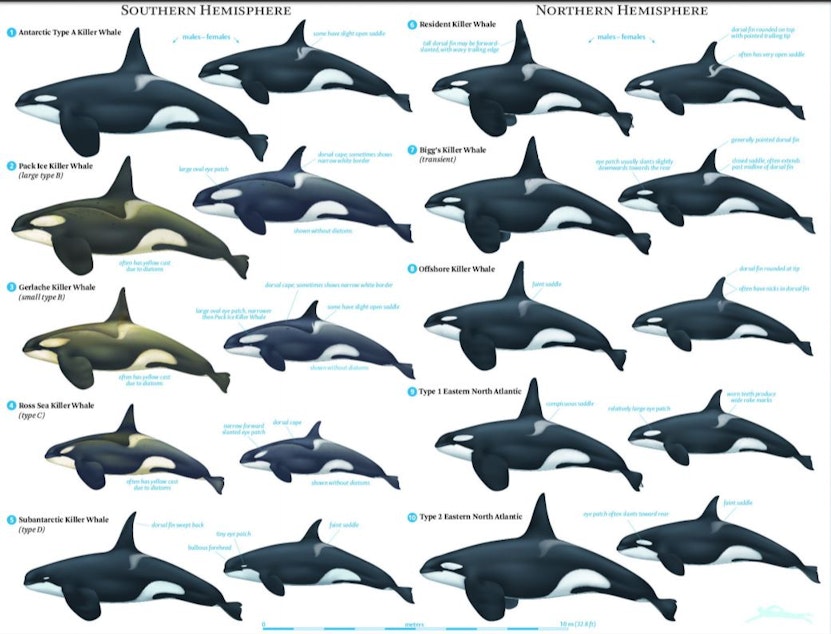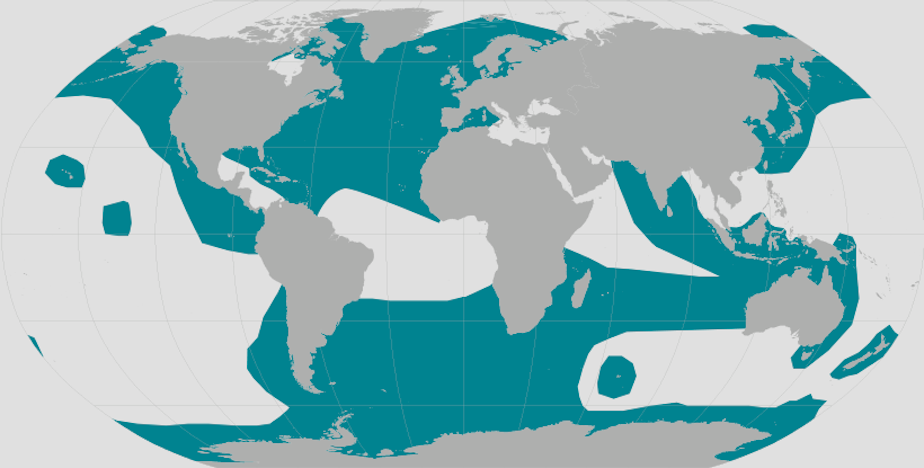Study: Toxic PCBs threaten orcas around the world

With only 74 of them left, the endangered, fish-eating orcas of the Salish Sea are getting a lot of attention. But killer whales can be found around the world, and more than half of those populations are threatened by toxic chemicals called PCBs, according to a new study in the journal Science.
The killer whales known as transients, or Bigg's killer whales, eat other mammals, including seals, sea lions and porpoises.
Transient orcas' diet places them at the very top of the ocean food chain. But it also exposes them to even more of the PCBs that threaten their fish-eating cousins.
The industrial chemicals were banned 40 years ago, but they linger in many places.
Transient killer whales of the Northeast Pacific are among the world's most contaminated mammals, with 10 to 20 times more PCBs in their blubber than resident orcas have.
The Science study, by 16 coauthors from 11 institutions in Europe and North America, says such contamination puts the transients at high risk for a population collapse in coming decades.
"Populations of Japan, Brazil, Northeast Pacific Bigg's, Strait of Gibraltar and United Kingdom are all tending toward complete collapse in our modeled scenarios," the authors wrote.
Orcas in Hawaii were also found to be at highest risk from the toxic effects of PCBs in their systems.
The endangered southern resident killer whales of Washington and British Columbia were deemed to be at moderate risk of a PCB-induced population collapse.
Low-risk populations of orcas included those in Alaska, northern Canada, Iceland, Norway, Antarctica and the eastern tropical Pacific.
"Get fat and stay fat"
Biologist Deborah Giles with the University of Washington, who was not involved in the study, cautioned that a similar dose of PCBs will affect some orcas much more than others.
Like many toxic compounds, PCBs gravitate toward fatty substances. In orcas, they accumulate in blubber.
Giles said, as long as whales are getting enough to eat every day, “They’re not metabolizing their blubber for energy, and therefore the toxins are staying locked up.”
“It’s one of the main reasons to get fat and stay fat if you’re a mammal,” she said.
Transients in our part of the world are currently doing much better than the underfed, resident orcas.
The Northeast Pacific Ocean is now home to 521 transient killer whales, with the population growing 3 or 4 percent annually.
“It’s crazy how fast they’re reproducing,” Giles said.
This story has been updated.





